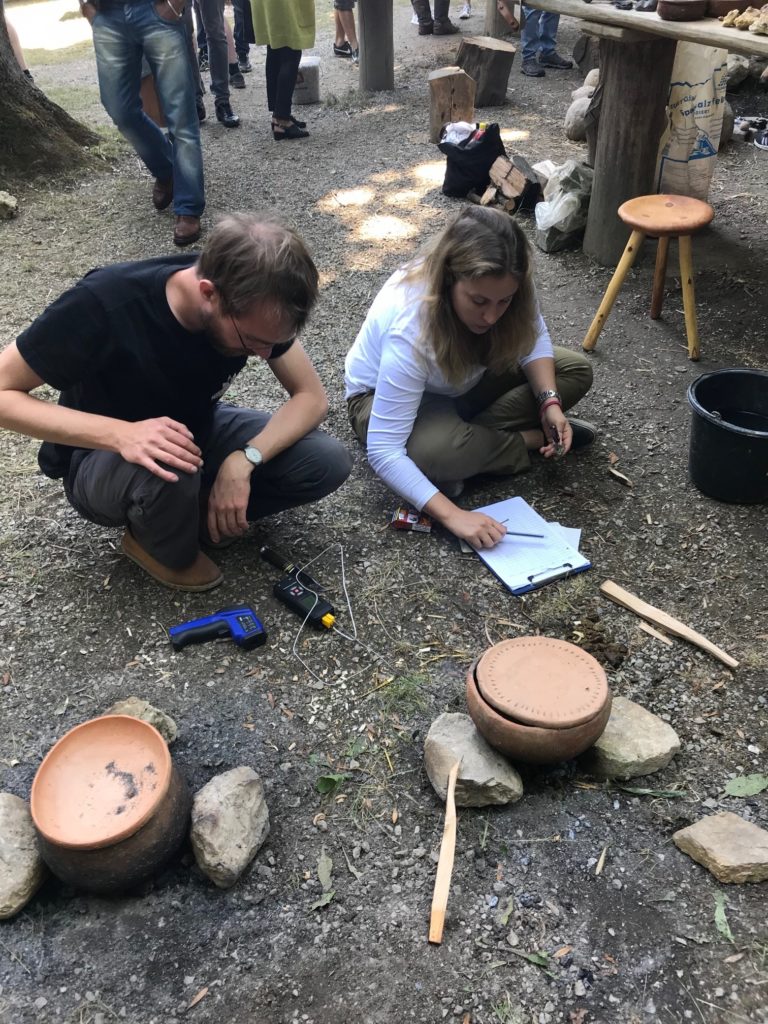I am very proud to announce the publication of a joint article about “The question of fuel for cooking in ancient Egypt and Sudan” in the current issue of Experimental Archaeology. It’s the outcome of my practical class in experimental archaeology at Asparn 2018 and it gives an overview of our tests and possible future lines of research. Since AcrossBorders investigated the lived realities of people on Sai during the New Kingdom, this small sub-project is highly relevant.
In the scientific article, we present all the results of our temperature measurements. For the measurements of the cooking pot we used a Colemeter WT700 Infrared Thermometer and a digital Type K Thermocouple, the latter especially for the fire and the pot filling.

We briefly mention also our test with a fire dog and horse dung as fuel – which also turned out as very successful!

All in all, the dung fires provide nice conditions for keeping good cooking temperatures – and this for a considerable long time, while preventing the fast cooling off of the fireplaces compared to our tests using wood only. This seems to be especially beneficial for dishes with long cooking or braising time like legumes, porridge and cereals. Of interest for future experiments would be, among others, to test a mixture of fuels and to trace the actual cooking activities in Bronze Age Egypt and Nubia further.
Looking very much forward to the upcoming experiments in Asparn 2019, many thanks go for now to my great team of co-authors and supporters!

Quite often, when you look at those technical solutions of this or that problem, which were used by our ancestors, you think: “How did they even think of such a thing?” And some of them are not at all clear, as, for example, the construction of the pyramids in Egypt. Moreover, it turns out, we are often not clear not only with the technology of construction, but also the goals of such grandiose buildings. Here, for example, recent experiments of the effects of pyramid-shaped structures on humans https://allatra.tv/en/video/unikalnoe-vozdejstvie-na-krov-experiment-piramida which show that the shape of the pyramid is not at all as simple as it seems at first glance. And what other discoveries about our antiquity await us ahead? We can only wish the AcrossBorders team success in their hard work 🙂